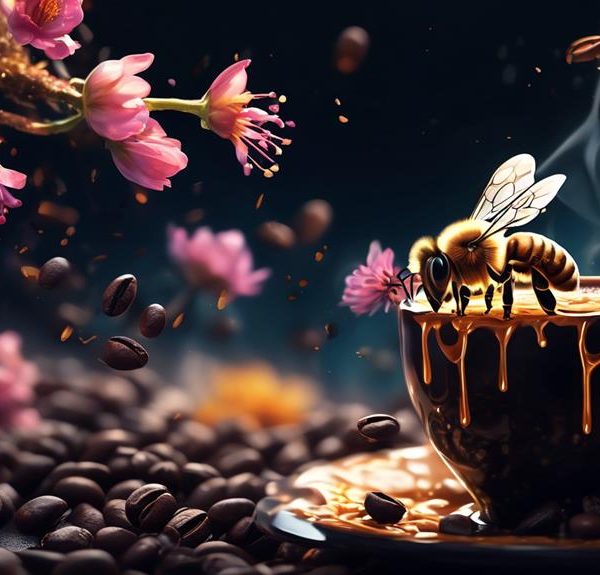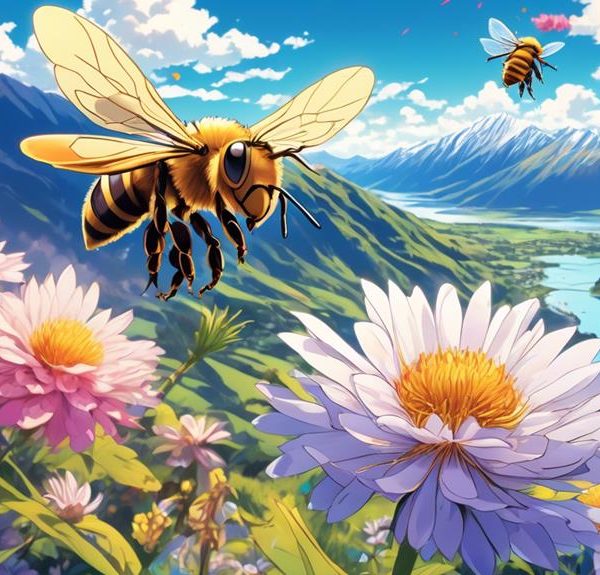Journey into the buzzing world of New Zealand's unique bee species and their vital role in the flourishing flora.
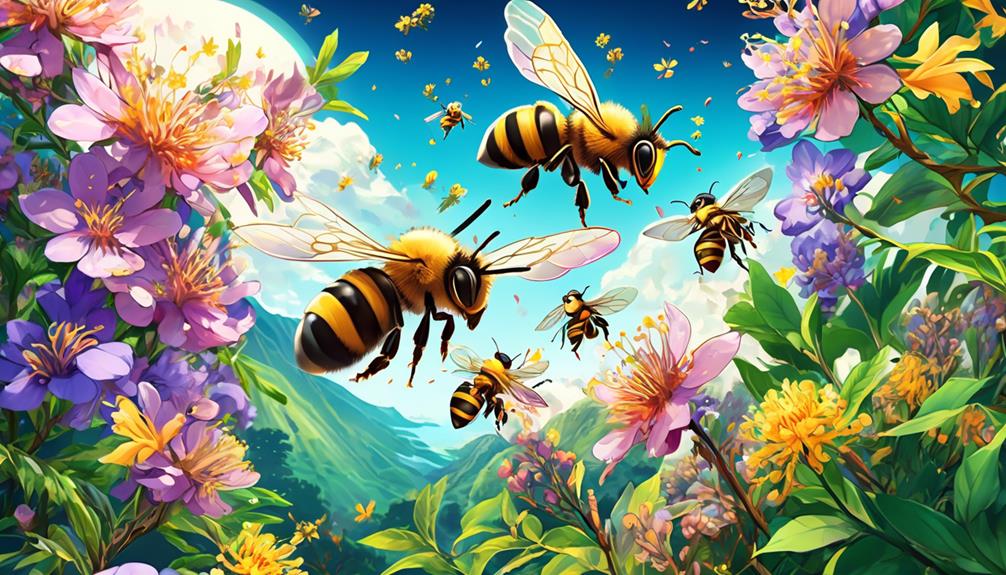
What Bees Are in New Zealand?
Buzzing beyond boundaries, bees are a vibrant part of New Zealand's unique ecosystem. You might be surprised to learn that the land of the long white cloud is home to more than just the common honeybee. From industrious natives to introduced species, each bee plays a vital role in New Zealand's flora flourishing.
But, why are some of these bees unique to this part of the world, you ask? That's a question that needs a deeper exploration into the buzzing world of these tiny powerhouses. Let's embark on this journey, shall we?
Key Takeaways
- New Zealand is home to a diverse range of bee species, including both native and introduced bees.
- Native bees in New Zealand belong to the genus Leioproctus and play a crucial role in pollinating native plants.
- The Western honeybee is the most significant introduced bee species in New Zealand and is a key pollinator of crops and wildflowers.
- Bees are vital pollinators that are critical for the survival of native plants and agricultural crops in New Zealand, and their decline can indicate problems in ecosystems.
Understanding New Zealand's Bee Diversity

To truly appreciate New Zealand's unique bee diversity, you'll need to delve into the country's rich and varied habitats, which host a myriad of bee species. From dense forests to sprawling farmlands, each geographical location bears its bee population with distinct characteristics.
New Zealand's bee species are broadly classified into two categories: native bees and introduced bees. Native bees are exclusive to New Zealand, with 28 species falling under the genus Leioproctus, colloquially known as solitary bees. They're unique for their solitary nesting habits. Each female bee builds and provisions her own nest rather than living in communal hives.
Introduced species, on the other hand, include the well-known European honeybee (Apis mellifera), bumblebees, and leafcutter bees. These species have been brought into the country for commercial pollination and honey production. They've adapted well and are now integral to New Zealand's ecosystems.
It's crucial to understand that maintaining this bee diversity is essential for New Zealand's ecological balance. Each species plays a unique role in pollination, ensuring the survival of native plant species, and contributing to the overall biodiversity. So, you see, New Zealand's bee diversity isn't just about bees; it's a testament to the country's thriving ecosystems.
Native Bees of New Zealand
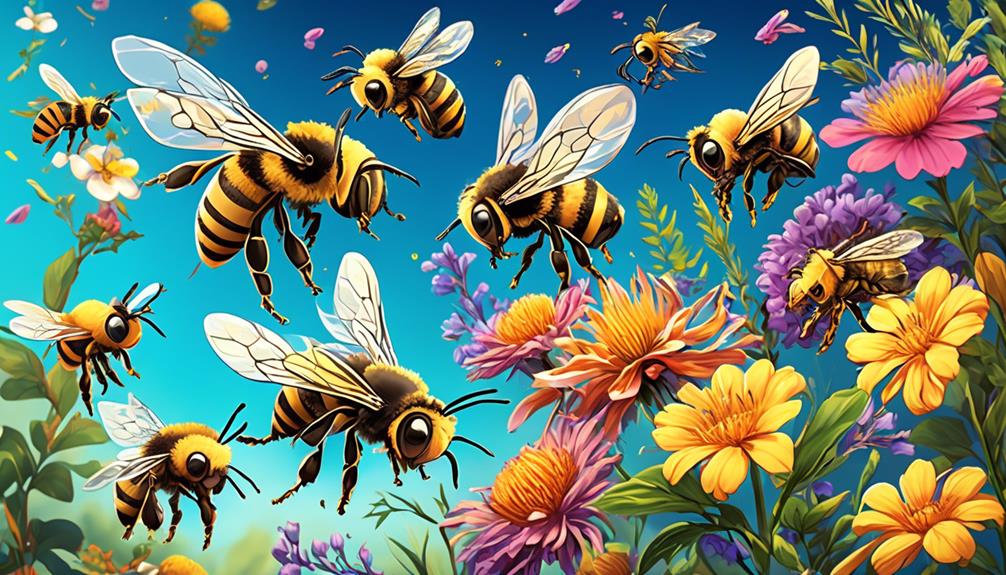
Diving deeper into New Zealand's bee population, let's focus on the native bees, those unique species that are found nowhere else in the world. You might be surprised to learn that there are 28 known species of native bees in New Zealand, all belonging to the genus Leioproctus. They're solitary bees, meaning they don't live in hives like honeybees, but instead make their nests in the ground or in plant stems.
These native bees are generally small, often just a few millimeters in length, and are usually black, although some species have vibrant metallic blue or green hues. Unlike honeybees, native bees don't produce honey, but they still play a crucial role in pollinating native plants.
Unfortunately, native bees face threats from habitat loss and the introduction of exotic bees, which compete for resources. Climate change also poses a risk, as it could disrupt the timing of flower blooming and bee activity. To protect these unique species, it's important to preserve their habitats and minimize the use of pesticides.
Introduced Bee Species in New Zealand
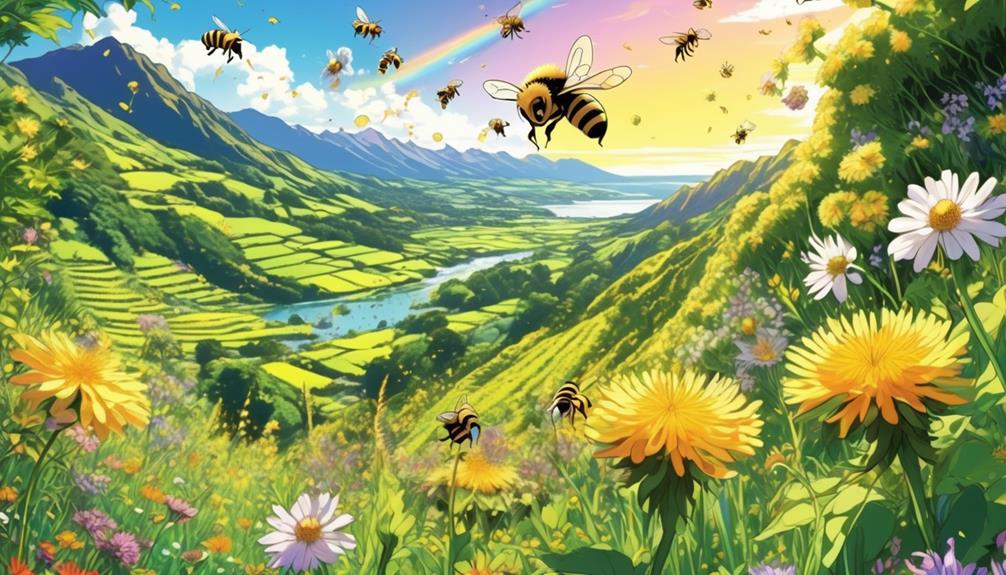
While the native bees of New Zealand are truly fascinating, it's also important to understand the role and impact of introduced bee species in the country's ecosystem. The most significant of these is the Western honey bee, or Apis mellifera, which was brought to New Zealand in the early 19th century. This species has had a profound influence on both agriculture and the native flora, as it's a key pollinator of many crops and wildflowers.
However, the introduction of this species hasn't been without its problems. In particular, it's been associated with the spread of diseases like American foulbrood, which can devastate bee populations. Additionally, there's some concern that the Western honey bee could be outcompeting native species for resources.
Another introduced species is the bumblebee, used for the pollination of clover and other important crops. However, much like the Western honey bee, bumblebees may pose a threat to native bee species through competition and disease transmission.
It's clear that introduced bee species play a complex role in New Zealand's ecosystem. Their impact is a mix of beneficial contributions to agriculture and potential threats to native biodiversity.
The Role of Bees in Ecosystems
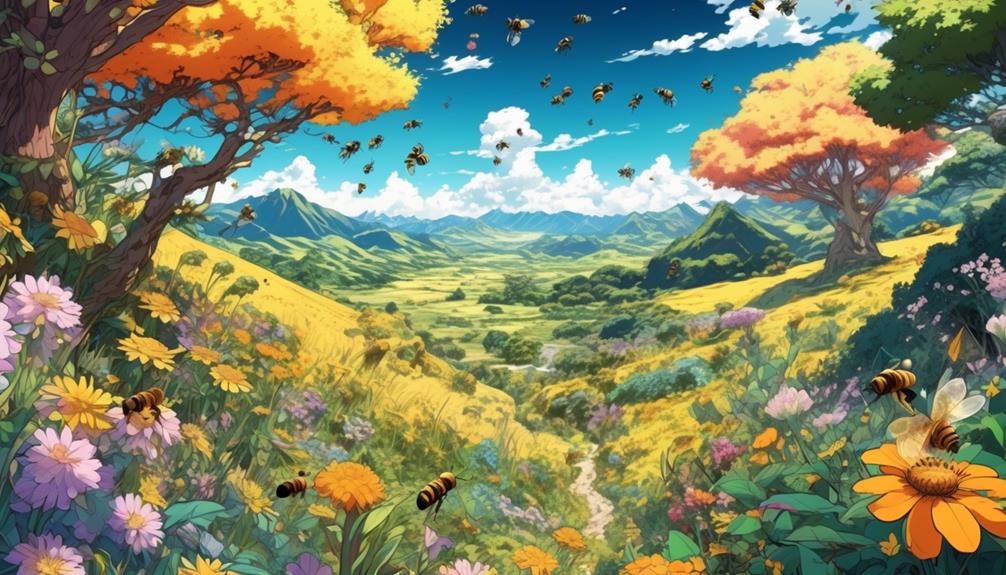
You mightn't realize it, but bees play an indispensable role in our ecosystems, acting as vital pollinators for a plethora of plant species. By transferring pollen from the male parts of a flower to the female parts, they facilitate the process of fertilization, enabling the production of fruits and seeds.
In New Zealand, bees' pollination services are critical for the survival of native plants like the iconic Kowhai tree, whose yellow flowers rely heavily on bees for pollination. They're also essential for agricultural crops such as kiwifruit and apples, contributing to the country's economy.
However, bees aren't just pollinators. They're also indicators of environmental health. A decline in bee populations can signal problems in our ecosystems, like pesticide exposure or habitat loss. That's why it's so crucial to protect and conserve them.
Unique Characteristics of Kiwi Bees
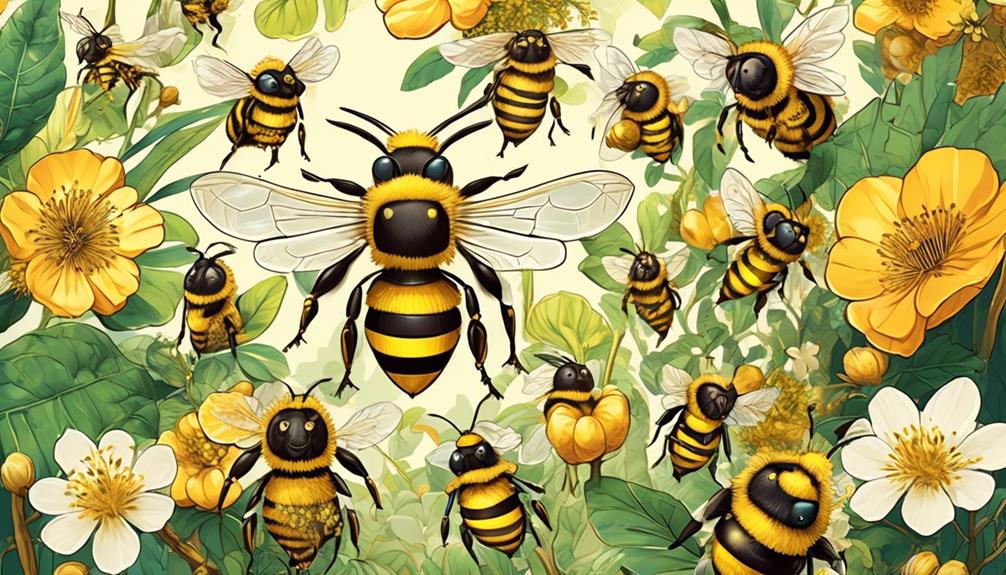
New Zealand's bees, often referred to as 'Kiwi Bees,' exhibit a unique set of characteristics that set them apart from their global counterparts. You'll find that these bees aren't just distinctive in their behaviors but also in their physical attributes.
Firstly, Kiwi Bees are usually quite small, typically measuring less than 10mm in length. Their size allows them to access nectar from native New Zealand plants that other bees can't reach. Their color varies from dark brown to black, often with a metallic sheen, setting them apart visually from many other bee species.
Furthermore, unlike most bees that form large colonies, the Kiwi Bee is predominantly solitary. Each female tends to her nest, which she constructs in the ground or within existing cavities. It's in these nests where she lays her eggs and provides food for her offspring.
Lastly, Kiwi Bees are known for their adaptability. They've evolved to tolerate the unique climatic conditions of New Zealand, from the moist coastal regions to the dry interior landscapes. This resilience is testament to their survival skills and is a key factor in their successful integration into the local ecosystem.
Frequently Asked Questions
What Are the Common Threats to Bees in New Zealand?"
In New Zealand, bees face numerous threats. Most notably, Varroa mites are a significant concern. These parasites weaken bees and spread disease.
Pesticide exposure also poses a risk to bees. It affects their behavior and survival, making them more vulnerable to other threats.
Habitat loss due to urban development and climate change is another challenge for bees. It impacts their food sources, reducing their ability to gather nectar and pollen.
Lastly, competition from introduced bee species can strain resources. These invasive species compete with native bees for food and nesting sites.
It is crucial to understand and mitigate these threats in order to protect New Zealand's bee population. Bees play a vital role in pollinating plants and ensuring a healthy ecosystem. A decline in their population would have far-reaching consequences for agriculture and biodiversity.
How Does the Climate of New Zealand Impact the Behavior and Survival of Its Bees?"
New Zealand's variable climate greatly impacts its bee population. In warmer areas, you'll find bees active year-round, while in colder regions, they hibernate during winter.
Heavy rainfall can disrupt pollen collection, affecting their food supply. Also, extreme temperatures can harm the bees' survival.
Are There Any Specific Beekeeping Regulations in New Zealand?"
Yes, there are specific beekeeping regulations in New Zealand.
You're required to register as a beekeeper with the Ministry for Primary Industries.
You've also got to maintain records of your hives and their health status.
It's important to follow these regulations to prevent disease spread and ensure the health of New Zealand's bee populations.
Not complying could result in fines or other legal consequences, so it's best to stay informed.
How Does the Honey Produced by New Zealand Bees Differ From Other Regions?"
You're curious about how New Zealand's honey differs from others.
It's mainly due to the unique flora, like the Manuka bush. Bees feed on its nectar, producing Manuka honey, renowned for its medicinal properties.
Moreover, the isolated ecosystem of New Zealand means less pollution and pesticides, resulting in purer honey.
What Conservation Efforts Are Being Made to Protect the Native Bee Species of New Zealand?"
You're probably curious about New Zealand's efforts to conserve their native bees. They're taking the plight of these bees seriously.
Local communities, government bodies, and conservation groups are all working together, creating habitats and planting bee-friendly flora.
They're also limiting the use of pesticides that harm bees. Strict regulations have been put in place to prevent the introduction of foreign bee species that could threaten the native population.
It's a collective effort to save these vital pollinators.
Conclusion
So, you've journeyed through New Zealand's bee diversity, from native species to introduced ones. You've grasped the integral roles these buzzing pollinators play in ecosystems.
You've explored the unique traits of Kiwi bees. By now, you should appreciate the vital importance of these tiny creatures.
Let's continue to unearth the mysteries of these small yet significant pollinators, as understanding them better can help us protect their future, and consequently, our own.

